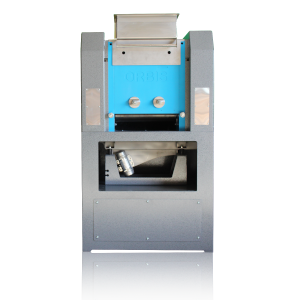How Important is Crushing Equipment for XRF Sample Preparation?
X-ray fluorescence (XRF) analysis is a unique technology that comparatively measures the intensity of sub-visible x-rays emitted by a sample excited with an incident light. A comparative measurement in this context refers to the analysis of fluorescent signals against specific spectral fingerprints associated with elements on the periodic table. These excitation signals are weaker than the incident light by many factors of magnitude, requiring ultra-precise photodetectors and additional optics with outstanding out-of-band rejection. This highlights the importance of consistency in the field of XRF analysis.
It is possible to subject an unprepared surface area to XRF analysis. Handheld analyzers are routinely used in archaeological and mining applications. These components are associated with significantly reduced sample preparation requirements, with a commensurate trade-off for the quality of analytical results. The most accurate and reliable XRF analysis results are acquired through benchtop analysis of samples that have been prepared as fused beads or pellets, the raw constituent of which has been passed through crushing equipment for sample homogenization.

The Importance of Crushing Equipment
Little to no sample preparation is sufficient for certain application areas, but reliable detection of trace elements in samples down to the parts per million (ppm) range requires a comprehensive sample analysis methodology. Crushing equipment is used to eliminate sample inconsistencies and surface variations that can introduce unacceptable margins of error for XRF analysis.
Crushing equipment breaks down sample material to reduce the particle size by as much as twenty-five times of their original size. Mineralogical compounds typically comprise numerous elemental constituents of various phases and particle sizes. These inhomogeneities impart a particle size effect that impacts the depth of resolution for XRF analysis. The only way to effectively eliminate this effect is to pass raw sample materials through crushing equipment such as the Orbis OM50 double-acting jaw crusher.
The capacities of crushing equipment vary depending upon the application requirements. The Orbis OM50 crusher, for example, can reduce samples of 70mm to just 2mm in a single pass. These loose powders can be directly analyzed in an XRF spectrometer, yet homogenization is most commonly used as an intermediate step before sample fusion.

Sample fusion is the point at which loose sample media is mixed with a lithium borate flux and heated to a molten eutectic mixture that is subsequently formed into flat discs, beads, or pellets. This is time-consuming and admittedly costlier than analysis of loose powders, but it is also associated with a commensurate increase in analytical quality. Crushing equipment is, therefore, essential to unlocking the most precise and reliable analytical results for XRF sample analysis down to the ppm range.
Crushing Equipment from XRF Scientific
XRF Scientific is one of the world’s leading authorities in the field of XRF sample preparation. We provide comprehensive solutions for mineralogical, architectural, and petrochemical sample applications, with an extensive catalog of crushing equipment suitable for any level of throughput.
If you would like more information, read our previous blog post: Outlining the Crushing Equipment Available from XRF Scientific. Or, contact us directly if you have any specific questions.









